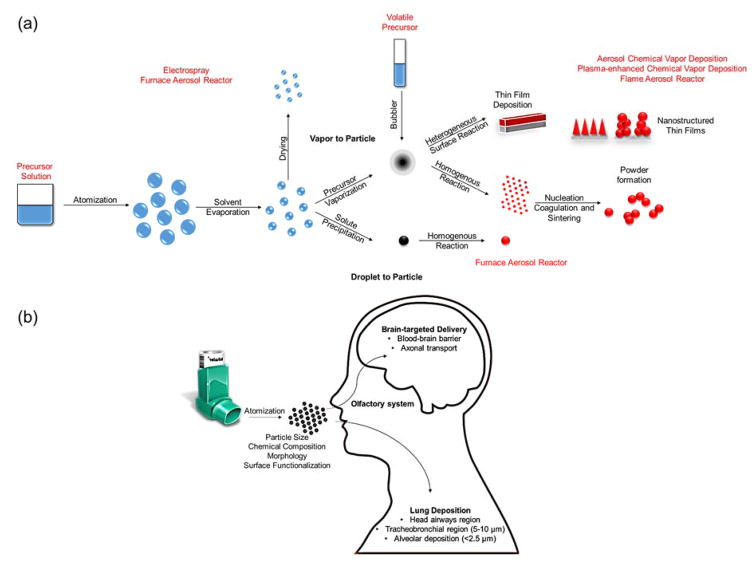Figure 2.
A typical steps for an aerosol synthesis of nanoparticles and application (a) Schematic of aerosol-based routes for material synthesis. The two major synthesis routes are vapor-to-particle formation and droplet-to-particle formation. In droplet-to-particle formation, a precursor solution is atomized to form small droplets, which evaporate until the solute precipitates and homogenous reaction takes place on the surface of the droplet to form a particle. In vapor-to-particle formation, the precursor takes the form of a vapor, which can undergo either homogenous gas-phase reaction to form molecules of the desired material that then nucleate and grow through coagulation or sintering or heterogeneous reaction on the substrate surface to form thin films of the desired material. (b) Schematic of aerosol-based routes for drug delivery. Traditional drug delivery routes are through the respiratory system; however, more recent advances are focused on delivery directly to the brain, through the blood-brain barrier and axonal transport.

